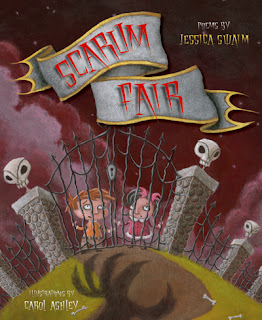Shared with Kinder and 2nd Grade
Targeted Skills: Purposes and examples of different kinds of media
At the beginning of last summer I had the privilege of attending a workshop presented by Donalyn Miller--Book Whisperer Extraordinaire. She told us about a website called Wonderopolis, and I have been waiting for the perfect time to introduce it to my students. This was Wonderopolis week!
We focused on the Wonder from last December 25 entitled "Where Do Candy Canes Get Their Shape?" I wanted a Christmas themed topic, and since it's a new Wonder every day, you can search the site to explore past topics. Since the students were focusing on media that they see (read), watch, and hear, we watched the video on how candy canes are made at Disney Land (of course, they are made magically). This was a great review of a "procedural text" or "how to make stuff" from last week. The articles on Wonderopolis are very through, so I summarized some to the facts about candy canes that were included (I glazed over the religious context since I teach in a public school). During checkout time, we listened to Christmas music on Pandora and talked about how this is an example of media that we hear.
The teachers on my campus were so excited to learn about Wonderopolis because it is a great example of interesting expository text. Make sure you click on the different tabs on top of the main article to go deeper into the topic: "Try it out," "Wonder Words" (GREAT for vocabulary development), "Still Wondering?", and "Wonder What's Next?" I especially love the "Wonder What's Next" tab because it gives a hint for the next day's Wonder. It would be a fun way to work on predicting. Wonderopolis ROCKS, and I will definitely be using it more in the library. It was a perfect way to introduce that all research begins with a wonder.
Lesson Frame:
Scaredy Squirrel Prepares for Christmas by Melanie Watt
Read to: 1st Grade
Targeted Skills: Characteristics of a functional text; Differences between fiction and nonfiction
This might seem like a stretch for an example functional text, but it really works perfectly. I had to find a way to work the newest Scaredy into my holiday book rotation because my kids are HUGE fans of this OCD Squirrel.
We first reviewed the characteristics of a functional text that they had learned in their classroom. I shared the book under the Elmo because Scaredy books need to be SEEN as well as heard. I did not read the entire book because it is long, and I had to talk through it and point out things in the pictures because this does not follow a narrative structure. But it is a PERFECT example of a functional text (lists, diagrams, maps, signs, survival tips, directions)--for a squirrel who easily gets stressed out. The kids were able to make the distinction that this book is fiction. We then talked about how we could make it nonfiction by making it about humans rather than a squirrel. I made the suggestion to the teachers to have the kids work on their own "Survival Guides" to give to their parents since adults (and squirrels) seem to get WAY MORE stressed out about the holidays than children do.
Lesson Frame:
Postcards from Camp by Simms Taback
Read to: 3rd and 4th Grade
Targeted Skills: Summarize the plot; Questioning; Making Inferences; Author's Purpose
This is one of the COOLEST books that I have seen in a long time, and the kids LOVED it. As one of the Texas Bluebonnet selections for 2012, I am projecting this one as the winner at my school. But we will have to wait for the vote in January. This book must be read under the Elmo so that the kids can see the actual postcards and letters.
The premise of the story is simple, but it's fun for the kids to predict what the card will be about based on the front and also what will the father's response be. Will he give in and come pick up his miserable camper son? The theme of this book is also wonderful for kids to realize. After we finished, I asked the kids WHY did the author write the book this way? Why did he include the actual pieces of mail rather than just tell us the story? "Because it just makes it WAY COOLER like this, Mrs. Bailey!!" I agree. Totes.
Lesson Frame:
Hot Diggity Dog: The History of the Hot Dog by Adrienne Sylver
Read to: 6th Grade
Targeted Skills: Compare the characteristics of fiction and nonfiction; main idea and supporting details
Please see my Week 8 post about this lesson.
Ruth and the Green Book by Calvin A. Ramsey
Shared with 5th Grade via the Bluebonnet Blog
In order to get at least 5 Bluebonnet books read to all of my 3rd--6th graders, I rely on the help of my wonderful teachers. I am trying something new this year. I started a Shaw Bluebonnet blog to make the lessons more intentional and aligned with the curriculum. Therefore, I am not just thrusting a book into the teacher's hands and saying, "Please read this!" I am looking at the curriculum and giving the book to the teacher when if fits their focus for the week. I have included questions on the blog for them to follow so that teachers can read the book when
it is convenient for them and hopefully have a meaningful lesson. I want to
make it as easy and helpful as possible for them because they have so
much on their plates right now. Since the 5th graders were concentrating on literary nonfiction, this book fits. I will have the 5th graders in to read to them in person after the holiday break.













.JPG)



























.JPG)










